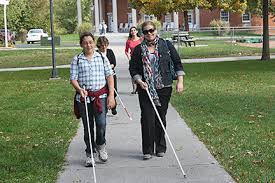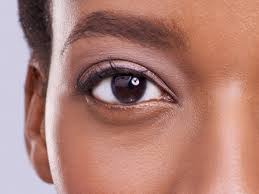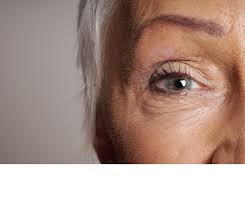Causes of blindness
An overview of the most common causes of blindness worldwide.
At least 75 percent of blindness is preventable. For many years now, LIGHT FOR THE WORLD has been working to reduce avoidable blindness. In most cases, treatment or prevention could be easy if sufficient resource were in place: by the timely administration of medication, by small routine operations, by prevention and education measures. However, many people still do not have access to treatment, medication or doctors.
Cataract
is the world’s most common cause of blindness, affecting 65 million people worldwide. This clouding of the lens may occur due to age, injury or be congenital. Cataracts can be treated by replacing the cloudy lens with an artificial one in a 15-minute operation.
Glaucoma
is the third most common cause of blindness. Glaucoma can be treated with medication and an operation, but is not curable.
River blindness (onchocerciasis)
is a parasitic disease which causes inflammation and bleeding that leads ultimately to blindness and other disabling effects. River blindness is on the retreat worldwide thanks to the widespread distribution of the drug Mectizan.
Trachoma
is the most widespread infectious cause of blindness, responsible for the visual impairment or blindness of about 2 million people. Repeated infections with the bacterium Chlamydia trachomatis cause the inside of the eyelid to scar, turn inward and painfully scratch the cornea, eventually leading to irreversible blindness. In its earlier stages, trachoma is treated with antibiotics and is preventable through improved hygiene and sanitation. In the final stage of the illness, referred to as Trachomatous Trichiasis, surgery on the eyelid is the only way to prevent the loss of sight.
Uncorrected refractive errors (URE)
About 124 million people are visually impaired due to uncorrected refractive error. In most cases, vision can be restored with spectacles. In Uganda, LIGHT FOR THE WORLD together with the Brien Holden Vision Institute has successfully initiated a National Programme giving poor people access to high quality, tailor-made spectacles.
Childhood blindness
Around 1 million children are blind and about 19 million visually impaired due to causes like uncorrected refractive errors, Vitamin A deficiency, cataract or injury.

Prevalence
Globally, 1 billion people have a vision impairment that could have been prevented or has yet to be addressed.
This 1 billion people includes those with moderate or severe distance vision impairment or blindness due to unaddressed refractive error (123.7 million), cataract (65.2 million), glaucoma (6.9 million), corneal opacities (4.2 million), diabetic retinopathy (3 million), and trachoma (2 million), as well as near vision impairment caused by unaddressed presbyopia (826 million) (1).
In terms of regional differences, the prevalence of distance vision impairment in low- and middle-income regions is estimated to be four times higher than in high-income regions (1). With regards to near vision, rates of unaddressed near vision impairment are estimated to be greater than 80% in western, eastern and central sub-Saharan Africa, while comparative rates in high-income regions of North America, Australasia, Western Europe, and of Asia-Pacific are reported to be lower than 10% (2).
Population growth and ageing are expected to increase the risk that more people acquire vision impairment.
Strategies to address vision impairment
Effective interventions are available for health promotion, prevention, treatment and rehabilitation to address the entire range of needs associated with eye conditions and vision impairment across the life course. Some are among the most feasible and cost-effective to implement. For example, uncorrected refractive error can be corrected with glasses while cataract surgery can restore vision. Vision rehabilitation is also effective in improving functioning for people with an irreversible vision impairment.

What is sudden blindness?
Sudden Blindness is a condition when you suddenly find it difficult to see. People think that sudden vision loss is the same as complete blindness. However, they are not the same. You might experience blurry vision. You might feel like you are suffering from a sudden loss of peripheral vision. Else, you might even feel like a sudden loss of your central vision. All of these three problems fall under Sudden Blindness. The duration of Sudden Blindness can vary. It may last for only a few seconds or many hours. There is a chance that Sudden Blindness may be permanent if treatment is not received at the appropriate time.
PREVENTION OF BLINDNESS
Blindness can be prevented if you get your eyes checked regularly. Periodic eye examinations will ensure you are treated early in case you have any eye problems or in case of any sudden occurrences. This can prevent you from losing your vision. When you are diagnosed with a certain type of eye disease, then following your ophthalmologist’s instructions about what care needs to be taken are of high importance. This can help treat your problem. At any point, if you feel like you are suffering from blindness or any type of vision loss then you should make an appointment with your ophthalmologist at the earliest to ensure speedy treatment.
You must get your children’s eyes checked when they are 6 months old and then when they are 3 years old. When they turn 6 years old, you should get their eyes checked once a year to ensure their eyes remain healthy and they have no trace of blindness. However, if you feel like they have symptoms of eye disease or any eye problem, then it is best to get their eyes checked by an ophthalmologist at the earliest. Waiting for the eye problem to go away on its own is never the solution and it can lead to permanent vision loss for children. This is why contacting an ophthalmologist is mandatory.
Some forms of blindness occur due to improper diet or diet lacking nutritional value. In such cases, blindness can be prevented by ensuring you are taking a proper diet. Proper eye protection can reduce the chances of you being blind. When an eye problem is detected early, blindness can be prevented as long as you take the necessary precautions suggested by your ophthalmologist. For instance, when glaucoma is detected early, on-time & appropriate measures can be undertaken to prevent blindness. Your ophthalmologist is the one who can best tell you which form of treatment is most suitable for you according to your case.
You should focus on eating foods that are low on sugar levels if you have diabetes. Managing your diabetes and controlling your blood sugar levels will help prevent blindness that can be caused due to diabetes. Proper exercise and maintaining a healthy weight is good for your overall health and your eyes too. You should focus on healthy habits and avoiding anything that raises your risk of becoming blind in the future. While some things might be out of your control, you should focus on things that you can control. You should ensure that if you are obese, you work towards getting healthier as a healthier weight decreases the risk of any type of blindness.
It is important to remember that some forms of blindness occur as people continue to live longer than their predecessors. While no prevention measures are available for such causes of blindness, research is continually being carried out.

What Are Signs and Symptoms of Blindness?
Symptoms of poor visual acuity may range from trouble focusing to glare to difficulty perceiving light.
Markedly constricted visual fields are seen in conditions such as advanced glaucoma and pigmentary retinopathies. In these cases, despite a small central area of relatively clear vision, the surrounding severe peripheral vision loss results in tunnel vision that can be disabling.
People born with sight who later lose vision can still form images in their mind. However, in people who lose sight due to damage to the portions of the brain that process visual input, there can be a loss of ability to form images in the mind. This is the case with trauma or strokes affecting the occipital cortex of the brain.
Most blindness is unassociated with physical pain. However, angle-closure glaucoma and various infectious and inflammatory eye disease can cause both pain and severe visual loss.
In most cases of blindness, there are no outward signs evident to others. In some cases, however, a rhythmic back and forth motion of the eyes (nystagmus) occurs in some forms of congenital blindness (blindness from birth). When one eye has poor sight relative to the other, it may wander and be misaligned relative to the eye with good sight. This misalignment is called strabismus. The most common cause of visual loss in one eye in children is amblyopia associated with strabismus or an uncorrected high refractive error. Eyes with inflammation may appear reddened. Corneal scars and swelling can appear as a grayish patch. Eyes with a dense cataract may have a visible white color in their pupil. Blind eyes with long-standing severe inflammation can also shrink in size (phthisis).
Knowing about silent eye diseases
- Age-related macular degeneration, diabetic retinopathy, glaucoma and cataracts have no early symptoms and usually don’t cause pain. As a result, they can develop without any indication that something is wrong. The only way to find these diseases early is with regular eye exams conducted by a skilled ophthalmologist. Although most of them are degenerative diseases without a cure, early detection can lead to treatments that can slow their progression.
- Age-related macular degeneration: Nearly 11 million people in the United States suffer with Age-Related Macular Degeneration, approximately the same number of people who have been diagnosed with all types of invasive cancer. This disease causes loss of center vision that is required to see things that are straight ahead. There are no symptoms in the early stage of the disease. However, in the intermediate and late stages of the disease there is vision loss.
- Diabetic retinopathy: Diabetics may begin to experience vision impairment due to this disease. It is a result of diabetes and is caused when blood vessels in the retina change. Taking care of diabetes and controlling blood sugar can help to avoid this disease.
- Glaucoma: This disease gradually reduces your peripheral vision. It has no early symptoms and therefore is called the “Silent Thief of Sight”. Glaucoma is one of the most common chronic eye diseases for seniors and is the leading cause of blindness for those over the age of 64. Half the people with glaucoma do not know they have it.
- Cataracts: Cataracts cause cloudy vision as the lens of the eye begins to harden. Cataract surgery removes the old lens and inserts an artificial lends to restore vision